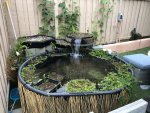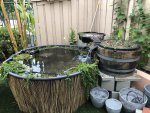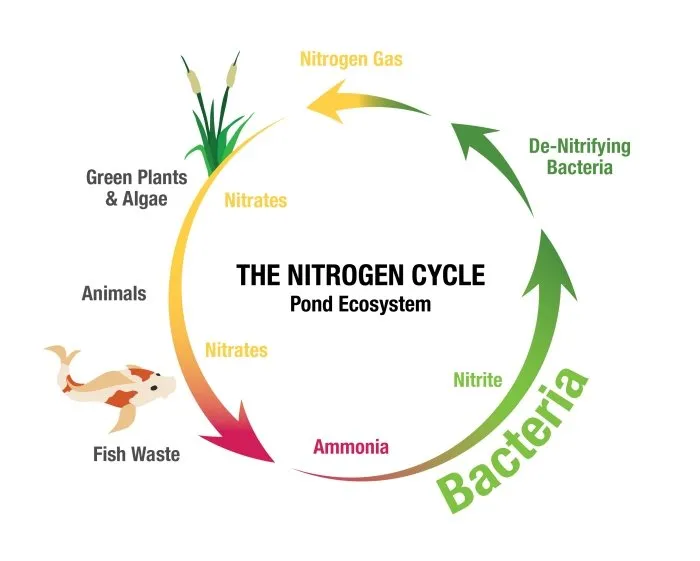- Joined
- Apr 1, 2021
- Messages
- 258
- Reaction score
- 182
- Location
- Carlsbad, CA
- Showcase(s):
- 1
- Hardiness Zone
- 10a/sunset zone 23
- Country

Good evening,
I was wondering if anyone has ever listed out the typical water changes one can expect with a new pond and where things can go a bit off the rails. Eg, I've gathered that at some point the whole pond turning green would be normal, but large amounts of string algae would not be. Trying to decide how soon to add the bigger bioload fish (4 med-large goldfish), all that's in there right now are three danios taking my water garden/small pond for a test drive, and a whole lot of plants that are still growing in above and underneath (aquatic - hornwort, eel grass, dwarf hair grass, lotus, with floating duckweed). Water very clear, no scum on the bottom thus far but noticed a bit of a clear slimy film on the surface since yesterday.
300 gall above ground main pool, two planted gravel bog filters that waterfall into main pool, ring of marginals on "stilts" that will eventually cover the rim of the pond and hide the pond forms and concrete blocks from view.
I was wondering if anyone has ever listed out the typical water changes one can expect with a new pond and where things can go a bit off the rails. Eg, I've gathered that at some point the whole pond turning green would be normal, but large amounts of string algae would not be. Trying to decide how soon to add the bigger bioload fish (4 med-large goldfish), all that's in there right now are three danios taking my water garden/small pond for a test drive, and a whole lot of plants that are still growing in above and underneath (aquatic - hornwort, eel grass, dwarf hair grass, lotus, with floating duckweed). Water very clear, no scum on the bottom thus far but noticed a bit of a clear slimy film on the surface since yesterday.
300 gall above ground main pool, two planted gravel bog filters that waterfall into main pool, ring of marginals on "stilts" that will eventually cover the rim of the pond and hide the pond forms and concrete blocks from view.



